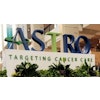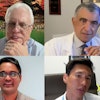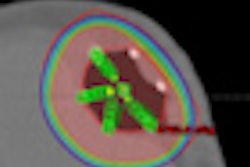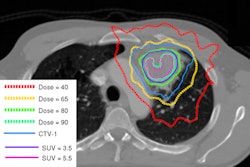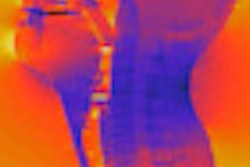Image-guided interstitial brachytherapy may be the breast cancer treatment of choice for women with breast augmentation who pursue breast conservation therapy, according to a study presented at the recent American Brachytherapy Society (ABS) annual meeting in San Diego.
Dr. Rezwan Chowdhury, a resident at Arizona Breast Cancer Specialists in Scottsdale, reported on the outcomes of 110 patients who received this treatment at the practice's three centers between 2003 and 2010. The practice has been following and reporting the outcomes of its patients for several years.
The cosmetic outcomes for all patients were uniformly excellent to good, and not one implant had ruptured from the brachytherapy treatment, Chowdhury said.
The centers serve a large and growing group of women who have often faced implant removal, followed by a mastectomy and reconstruction, as a treatment norm. In 2006, the American Board of Plastic Surgery estimated that 330,000 women had breast implant procedures, with an annualized growth rate of 13%. Although the number of implant procedures declined during the recession years of 2008 and 2009 in the U.S., the board reported that 600,000 women had breast augmentation surgery in 2010.
Whole-breast radiation is frequently disastrous for women with augmented breasts, according to Chowdhury. He said that between 46% and 67% of women who undergo this treatment have capsular contraction, and up to 25% experience implant failure. Capsular contraction, a painful fibrotic reaction to whole-breast radiation that leaves the implant misshapen and squeezed, usually occurs within 12 months and requires surgical revision.
To avoid this risk, more than half of the women with augmented breasts who were diagnosed with early-stage breast cancer in 2007 elected to have a mastectomy followed by reconstruction, according to a study by radiation oncologist Dr. Robert Kuske.
Under Kuske's leadership, Arizona Breast Cancer Specialists has been at the forefront of pioneering breast-conserving treatment for women with augmented breasts who have been diagnosed with early-stage breast cancer. The treatment technique the practice utilizes involves "pinch-view" imaging to guide the interstitial placement of catheters 1.5 cm to 2.0 cm around the lumpectomy cavity.
Kuske and colleagues prefer interstitial placement of catheters around the cavity because the breast tissue tends to be thin over the augmentation. This makes insertions of a breast brachytherapy balloon impractical, Chowdhury explained.
Of the 110 women who were treated with accelerated partial-breast irradiation, 107 underwent interstitial brachytherapy and three were treated with a multicatheter, single-entry, strut-adjusted volume implant (SAVI) brachytherapy applicator from Cianna Medical. The dose prescription was 34 Gy in 10 fractions, delivered at least six hours apart over five treatment days. High-dose-rate iridium-192 brachytherapy was used.
The women have been followed between three months and seven years, with a median follow-up of 33 months. None of the patients experienced implant failure or capsular contraction. There were also no regional nodal collapses, but one patient had ipsilateral breast cancer recurrence, Chowdhury reported.
Dr. David Wazer, chairman of the department of radiation oncology at Tufts Medical Center, commented on the plenary session presentation, lauding Arizona Breast Cancer Specialists' publications of the outcomes of these patients.
Regarding previous research, "The literature is a real morass of conflicting data and the quality of reporting is not very high," he said. "There is a lot of conflicting data from single institution sources. In this area, there is a paucity of reliable, high-quality studies."
Wazer also acknowledged the difficulty of imaging patients with breast implants. "It's not impossible, but it is difficult and requires specialized mammographic techniques," he noted.
"The treatment technique described today is clearly going to impact the management of breast cancer in the coming years, as women who have had breast augmentation surgery age," Wazer observed.
Breast cancer patients who've had breast augmentation concur. Approximately one-third come for treatment from other states, and an increasing number of patients come from other countries. They want to try a treatment that can preserve their breasts, according to the centers' spokesperson.
